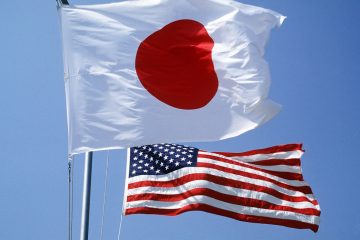As regulators circle, China’s fintech giants put the emphasis on tech
FOR those still trying to work out what exactly “fintech” involves, we are sorry to bring you this update from China, a world leader in mixing finance with technology. Fintech is passé; the hot new thing is “techfin”. This ungainly portmanteau was coined by Jack Ma, the chairman of Alibaba, an e-commerce giant, who announced on September 10th that he plans to step down in a year’s time (see article). It is not mere semantics, but indicative of the way that China’s fintech upstarts—firms that have excited investors, frightened banks and attracted legions of users—are adjusting as their reach is limited by regulators.
The landscape of Chinese fintech is dominated by two players: Ant Financial, an affiliate of Alibaba, and Tencent, best known for WeChat, its social-media network. Ant is estimated to be worth $ 150bn, only a little less than HSBC, putting it among the world’s most valuable financial firms. Tencent’s financial services are wrapped inside Tencent Holdings, which has a $ 400bn market capitalisation. They will, if left unchecked, grow much bigger. China’s government must now decide whether to try to slow their rise.
Both firms got their start in payments. Ant stems from Alipay, created in 2004 to make online shopping easier. Tenpay was launched in 2005 for QQ, Tencent’s online-messaging platform, and was later grafted onto WeChat. Both have boomed by linking mobile apps with offline payments. Almost all merchants in China, from the humblest vegetable stall to cafés where customers can feed the pets and upwards, provide QR codes to be scanned by phone in order to pay. According to iResearch, a consultancy, mobile transactions in China reached nearly 120trn yuan ($ 18.7trn) last year, 100 times more than in 2013—and more than all transactions handled worldwide by Visa and MasterCard combined.
At the moment Alipay has 54% of the mobile-payment market, to Tenpay’s 40%. But Steven Zhu of Pacific Epoch, a research firm, predicts that within five years Tenpay will pull level. Its main advantage is that WeChat, the main entry point for people using Tenpay, has more than 1bn active users. Alipay, as of early 2017, had about 520m active users in China. On Alipay’s side are the fact that people spend more on it and its rapid expansion overseas. It already works with more than 250 financial firms abroad, so that Chinese tourists can use it.
But Ant and Tencent are more interested in hooking users on other financial services than in payments alone. Once a user is on one of their platforms, mutual funds, insurance products and virtual credit cards are accessible with a tap of a finger on a phone. Online banks specialising in small loans are just a few clicks away. The scale of these activities is breathtaking. Alipay launched Yu’e Bao (“leftover treasure”) in 2013 as a money-market fund to give customers a small return on their idle cash. By June it had some $ 210bn in assets under management, making it the world’s biggest money-market fund by a wide margin.
It is easy to see why big banks want to restrain the fintech dynamos. “If the banks don’t change, we will change the banks,” Mr Ma said in 2008. Some bankers chortled; they are not laughing any more. Kapronasia, a research firm, estimates that fintech firms will take more than 40% of China’s potential payment-card fees by 2020, an annual loss of about $ 60bn for banks. The fintech firms’ incipient move into retail banking is even more alarming. “This is the most profitable area for banks,” says Linda Sun-Mattison of Bernstein Research. “They don’t want to just get stuck with lower-margin commercial clients.”
Regulators are more conflicted. By making spending easier, the fintech duo boost consumption, which has long been too low as a share of China’s GDP. They bring financial services to poorer people and force state-owned behemoths to up their game. But their popularity is also an economic risk. As Yu’e Bao shows, they can hoover up savings. “Customers are leaving banks,” says Cliff Sheng of Oliver Wyman, a consultancy. A bigger exodus might destabilise the financial system.
So over the past year, regulators have put speed bumps in their way. Under pressure to deflate Yu’e Bao, Ant has capped the amount of cash users can invest or withdraw in a day. The online banks launched by Tencent and Ant—respectively, WeBank and MYBank—have also been hindered by deposit caps. And the central bank called off a trial in which Ant and Tencent were developing credit scores on individuals. Instead, they were given stakes in Baihang, a state-owned credit-rating system.
Potentially most significant is the launch in July of NetsUnion, a clearing house for online payments. Although it should make mobile payments safer, it will also stand between fintech firms and banks, making it more difficult for Ant and Tencent to drive a hard bargain over fees. Ms Sun-Mattison thinks it only a matter of time before it is used to limit mobile transactions, ostensibly to address concerns such as money-laundering but also protecting banks from competition.
All this is the backdrop for the decision by Ant and Tencent to play up technology offerings instead of financial services. It is remarkable how similar their executives can sound. Henry Ma, the vice-president of WeBank, talks of being the “infrastructure provider” to commercial banks. Leiming Chen, general counsel at Ant, talks of giving banks a platform to “connect with users”. The idea for both is that, with their vast user bases and data troves, they can help banks identify smaller borrowers and manage lending risks. Banks put up the capital; Ant and Tencent get “technology fees”. Techfin is not as attention-grabbing as an all-out assault on banks. But as a business model, it is more likely to succeed.
This article appeared in the Finance and economics section of the print edition under the headline “And now for something completely different”









